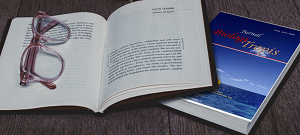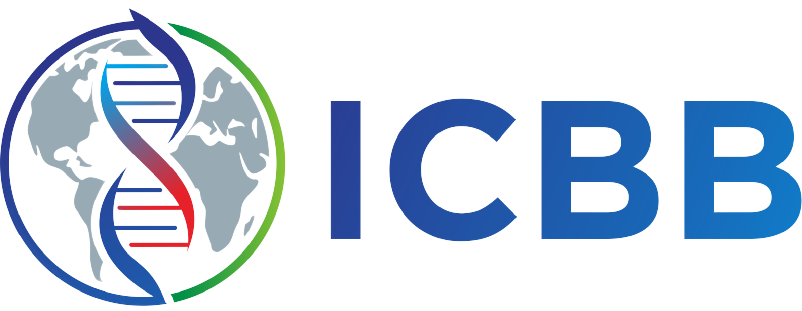Analysis of Cadmium (Cd) Heavy Metals Using Bioindicator Climbing pearch fish (Anabas testudineus) Derived from Rawa Taliwang Lake, West Sumbawa Regency 2025
Authors
M. Rozi Zarkasy , Khairuddin Khairuddin , M. YaminDOI:
10.29303/jbt.v25i2.9359Published:
2025-06-22Issue:
Vol. 25 No. 2 (2025): April-JuniKeywords:
Cadmium (Cd), Climbing perch, Rawa Taliwang LakeArticles
Downloads
How to Cite
Downloads
Metrics
Abstract
Fish is one of the aquatic biota that can be used as a bioindicator of river pollution by determining the content of heavy metals in the fish's body. The purpose of this study was to analyze the heavy metal content of cadmium (Cd) from climbing perch fish (Anabas testudineus) derived from Lake Rawa Taliwang, West Sumbawa Regency 2025. This study was conducted from January to March. Sampling was carried out using the purposive sampling method. Samples were taken as many as 2 fish at each station using a gill net. The species of fish taken were climbing pearch fish that were ready to be harvested. Then the samples were analyzed at the NTB Health, Testing and Calibration Laboratory Center. Data analysis was carried out by taking climbing pearch fish meat and then analyzing the heavy metal content in it using the Inductively Coupled Plasma-Mass Spectrometry (ICP-MS) method. The results of the analysis showed that the heavy metal content of cadmium in climbing pearch fish originating from Lake Rawa Taliwang ranged from 0.026 mg/kg (ppm) to 0.035 mg/kg (ppm). These results indicate that the Taliwang swamp lake is polluted by cadmium, but the cadmium content of climbing perch fish is still below the threshold based on the limit set by the Food and Drug Supervisory Agency (BPOM) No. 9 of 2022 concerning the Maximum Limit of Cadmium Heavy Metal Contamination in processed fish, which is 0.30 mg/kg.
References
Budiastuti, P., Rahadjo, M., & Dewanti, N., (2016). Analisis Pencemaran Logam Berat Timbal Di Badan Sungai Babon Kecamatan Genuk Semarang. Jurnal Kesehatan Masyarakat (e-Journal), 4(5), 119–118. http://ejournals1.undip.ac.id/index.php/jkm
Cahyani N., Djamar T. F., dan Sulistion, (2016). Kandungan Logam Berat Pb, Hg, Cd, dan Cu Pada Daging Ikan Rejung (Sillago sihama) di Estuari Sungai Donan, Cilacap, Jawa Tengah. Jurnal Pengolahan Hasil Perikanan Indonesia 19(3),267-276. Retrieved from https://shorturl.asia/gMbk2
Fahruddin, F., Kasim, S., & Rahayu, E. U., (2020). Cadmium (Cd) Resistance of Isolate Bacteria from Poboya Gold Mining in Palu, Central Sulawesi. Jurnal Biologi Tropis, 20(2),298–304. https://doi.org/10.29303/jbt.v20i2.2013
Harahap, A. A. F., Khairunnisa, K., & Novalia, V., (2022). Analisis Unsur Logam Berat Kadmium pada Kerang Darah di Pasar Tradisional Kota Lhokseumawe. Glosains: Jurnal Sains Global Indonesia, 3(2), 79–86. https://doi.org/10.36418/glosains.v3i2.83
Harsanti, A. W. dan E. S., (2018). Konsentrasi Kadmium (Cd) Dalam Gabah Padi dan Tanah Sawah Tadah Hujan Akibat Pemberian Pupuk Secara Rutin. Jurnal Ecolab,12(1), 12–19. DOI: https://doi.org/10.20886/jklh.2018.12.1.12-19
Khairuddin, K., Yamin, M., & Kusmiyati, K., (2021). Analisis Kandungan Logam Berat Tembaga (Cu) pada Bandeng (Chanos chanos forsk) yang Berasal dari Kampung Melayu Kota Bima. Jurnal Pijar Mipa, 16(1), 97–102. https://doi.org/10.29303/jpm.v16i1.2257
Khairuddin, K., Yamin, M., & Kusmiyati, K., (2022). Analysis of Cd and Cu Heavy Metal Content in Climbing perch (Anabas testudineus) Derived from Rawa Taliwang Lake, West Sumbawa Regency. Jurnal Biologi Tropis, 22(1), 186–193. https://doi.org/10.29303/jbt.v22i1.3105
Khairuddin, Yamin M., & Syukur, A. (2016). Analisis kualitas air Kali Ancar dengan menggunakan bioindikator makroinvertebrata. Jurnal Biologi Tropis. 16 (2):10-22. DOI: 10.29303/jbt.v16i2.220
Khairuddin, Yamin, M., Syukur, A., & Mahrus (2018). Penyuluhan Tentang Dampak Logam Berat pada Manusia di SMAN 1 Woha Bima Tahun 2017. Jurnal Pendidikan dan Pengabdian Masyarakat, 1 (2), 190-194. DOI: 10.29303/jppm.v1i2.843
Legiarsi, K., Khairuddin, K., & Yamin, M., (2022). Analysis of Cadmium (Cd) Heavy Metal Content in Headsnake Fish (Channa striata) Derived from Rawa Taliwang Lake, West Sumbawa Regency 2021. Jurnal Biologi Tropis, 22(2), 595–601. https://doi.org/10.29303/jbt.v22i2.3509
Liline, S., & Rumahlatu, D. (2019). Bioaccumulation of heavy metals (Cd, Pb, and Hg) in wawo worms (Polychaeta, Annelida) from Ambon Coastal Waters, Indonesia. Indian Journal of Geo Marine Sciences, 48(12), 1881-1887.
Masriadi, Patang, & Ernawati., (2019). Analisis Laju Distribusi Cemaran Kadmium (Cd) di Perairan Sungai Jeneberang Kabupaten Gowa. Jurnal Pendidikan Teknologi Pertanian, 5(2), 14 – 25. http://dx.doi.org/10.1016/j.regsciurbeco.2008.06.005%0A
Palar, 2012. Pencemaran dan Toksikologi Logam Berat. PT. Rineka Cipta
Pulungan, A. F., & Wahyuni, S., (2021). Analisis Kandungan Logam Kadmium (Cd) Dalam Air Minum Isi Ulang (AMIU) di Kota Lhokseumawe, ACEH. AVERROUS: Jurnal Kedokteran Dan Kesehatan Malikussaleh, 7(1), 75. https://doi.org/10.29103/averrous.v7i1.3666
Safitri, Feela Zaki., (2015). Tingkat Efek Kesehatan Lingkungan Kandungan Logam Berat Kadmium (Cd) dalam Kerang Hijau (Pernaviridis) yang Dikonsumsi Masyarakat Kaliadem Muara Angke Jakarta Utara Tahun 2015 (SKRIPSI) Universitas Islam Negeri Syarif Hidayatullah Jakarta.
Sari, S. H. J., Kirana, J. F. A., & Guntur, G., (2017). Analisis Kandungan Logam Berat Hg dan Cu Terlarut di Perairan Pesisir Wonorejo, Pantai Timur Surabaya. Jurnal Pendidikan Geografi: Kajian, Teori, dan Praktek dalam Bidang Pendidikan dan Ilmu Geografi, 22(1), 1-9. http://dx.doi.org/10.17977/um017v22i12017p001
Septya, L., & Pauzi, R. Y., (2024). Potensi dan Ancaman Kesehatan Masyarakat Kalimantan dari Bioakumulasi Logam Berat pada Ikan Sungai. Review. Journal of Biotropical Research and Nature Technology, 2(2), 93–102. DOI: https://doi.org/10.52850/borneo.v2i2.12763
Shoalichin, L. M., Khairuddin, K., & Yamin, M., (2022). Analisys of lead (Pb) Heavy Metal Content in Climbing Perch Fish (Anabas testudineus) Derived from Rawa Taliwang Lake, West Sumbawa Regency 2021. Jurnal Biologi Tropis, 22(3), 834–839. https://doi.org/10.29303/jbt.v22i3.3923
Silalahi, E. M., & Purwanti, E., (2021). Analisis Kandungan Logam Berat Timbal (Pb) pada Produk Olahan Susu. Food Scientia : Journal of Food Science and Technology, 1(1), 1–10. https://doi.org/10.33830/fsj.v1i1.1455.2021
Sitompul, R. M., Barus, T. A., & Ilyas, S., (2013). Ikan Batak (Neolissochillus sumatranus) Sebagai Bioindikator Pencemaran Logam Berat Timbal (Pb) dan Cadmium (Cd) di Perairan Sungai Asahan Sumatera Utara Ikan Batak (Neolissochillus sumatranus). J. Biosains Unimed, 1(2), 67–76.http://repositori.usu.ac.id/handle/123456789/42100
Sophia N. M. F., Krisostomus R., Silvanus M. S., Alfrianti P., (2022). Analisis Kandungan Timbal (Pb) Pada Perairan Pantai Desa Kupa Kupa, Kecamatan Tobelo Selatan, Kabupaten Halmahera Utara. Jurnal Pengelolaan Perikanan Tropis, 6(2),126-133.https://doi.org/10.29244/jppt.v6i2.43894
Testi, E. H., Soenardjo, N., & Pramesti, R., (2019). Logam Pb pada Avicennia marina Forssk, 1844 (Angiosperms: Acanthaceae) di Lingkungan Air, Sedimen, di Pesisir Timur Semarang. Journal of Marine Research, 8(2), 211-217. https://doi.org/10.14710/jmr.v8i2.25212
Vianne, M. S. A., Yusniar. H. D., & Hanan. L. D., (2017). Analisis Risiko Kesehatan Lingkungan Kandungan Kadmium (Cd) Dalam Ikan Bandeng Di Kawasan Tambak Lorok Semarang. Jurnal Kesehatan Masyarakat, 5(5), 724–732. https://jurnal.umpalembang.ac.id/sylva/article/view/893/790
Wahyuni Tri E., Mildranaya Eri., (2010). Panduan Wisata Alam di Kawasan Konservasi Nusa Tenggara Barat. Mataram: Balai KSDA NTB.
Wamaulana, F., Hasyimuddin, H., & Fakhruddin, A., (2022). Analisis logam berat kadmium (Cd) pada sampel pangan segar asal tumbuhan (PSAT) di BBKP Makassar. Filogeni: Jurnal Mahasiswa Biologi, 2(2), 53–58. https://doi.org/10.24252/filogeni.v2i2.29379
Wardani D. A. K., Dewi N. K., Utami N. R., (2014). Akumilasi loham berat timbal (Pb) pada daging kerang hijau (Perna viridis) di Muara Sungai Banjir Kanal Barat Semarang. Unnes Journal of Life Science. 3(1):1-8. http://lib.unnes.ac.id/id/eprint/32967
License
Copyright (c) 2025 M. Rozi Zarkasy, Khairuddin Khairuddin, M. Yamin

This work is licensed under a Creative Commons Attribution 4.0 International License.

Jurnal Biologi Tropis is licensed under a Creative Commons Attribution 4.0 International License.
The copyright of the received article shall be assigned to the author as the owner of the paper. The intended copyright includes the right to publish the article in various forms (including reprints). The journal maintains the publishing rights to the published articles.
Authors are permitted to disseminate published articles by sharing the link/DOI of the article at the journal. Authors are allowed to use their articles for any legal purposes deemed necessary without written permission from the journal with an acknowledgment of initial publication to this journal.


























